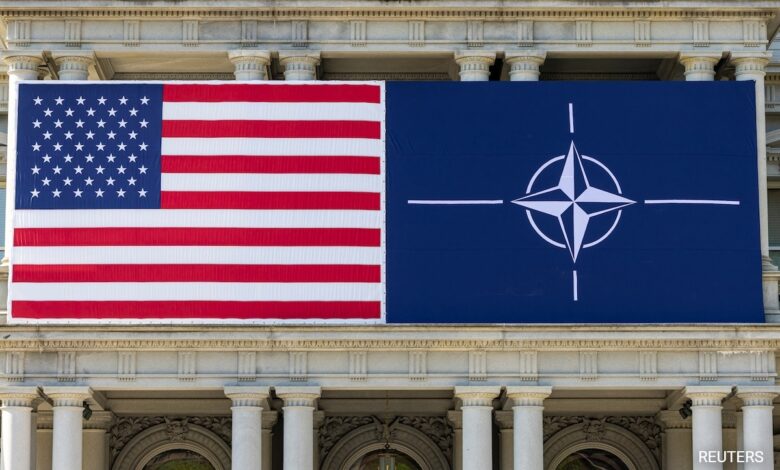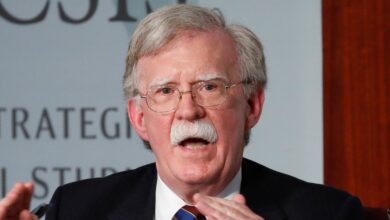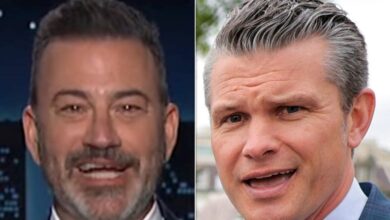NATO Tries To Keep US On Board Amid Fears Of Trump Withdrawal

Brussels:
Concerned US allies at NATO are working hard to maintain President Donald Trump’s involvement by increasing defense spending, pledging to take charge on Ukraine, and seeking opportunities to meet with him at the White House.
However, as his administration criticizes Europe, undermines Kyiv, and warms up to Russia, Western diplomats worry that even if the alliance is preserved, it could end up losing its essence.
“We can see the direction: less US presence in the alliance,” stated a NATO diplomat, who, like others, spoke on the condition of anonymity to discuss sensitive issues.
“Our goal is to keep as much US involvement in the alliance as possible.”
Despite this, US officials have affirmed their commitment to an alliance that has been a pillar of Western security with American military strength for more than seven decades.
This provides some reassurance after reports that Trump had considered withdrawing the United States entirely during his first term.
Nevertheless, warning signs are evident.
These include the strong disdain for Europe expressed by Trump’s team, threats against Greenland and Canada, and the president’s ultimatums regarding the protection of allies meeting spending criteria, which challenge the core of NATO’s mutual defense agreement.
Furthermore, as Washington hints at reallocating forces from Europe to address other priorities, Trump’s outreach to Russia has raised concerns that he may end up aligning with Moscow, the number one adversary.
“Optimism levels are certainly decreasing,” a second NATO diplomat informed AFP.
“The US has not made any concrete decisions yet, but each day seems to bring another blow to the foundations of the alliance.”
Possible Withdrawal from Europe?
In February, US Defense Secretary Pete Hegseth made a strong statement, informing European allies at NATO that they must “assume responsibility for conventional security on the continent,” as Washington focuses on deterring conflict with China in the Pacific.
Trump is not the first US administration to consider reducing its presence in Europe; Barack Obama announced a “pivot to Asia” in 2011.
“We always anticipated that the time would come when America would take a step back and Europe would need to do more – and that’s not necessarily a negative thing,” stated Jamie Shea, a former NATO official now associated with the Chatham House think tank.
“The goal is to maintain as much American engagement as possible, and if they do begin withdrawing, to ensure that they reduce less critical aspects and keep the door open for potential re-engagement.”
Diplomats and officials argue that if the United States plans to reduce its presence in Europe, it must provide a clear timeline to avoid leaving defense gaps on the continent.
Europe is increasing its defense spending and weapons production to be prepared, driven by Trump’s call to more than double NATO’s spending target to five percent of GDP.
However, officials acknowledge that replacing crucial assets like US nuclear capabilities will be extremely challenging.
“The Americans need to be transparent with the Europeans about what they plan to withdraw and what they intend to maintain – because currently, Europe is in the dark,” Shea explained.
“With Trump’s focus on immediate results over long-term strategies, there is a risk of mishandling the situation.”
Possible Alignment with Russia?
While US involvement within the alliance is a concern, NATO members in Europe are also worried about more fundamental threats.
NATO is built on trust – article five of its founding treaty states that an attack on one ally “shall be considered an attack against them all.”
This principle provides assurance to allies and deters adversaries, as long as everyone believes in it. However, Trump has raised doubts about the US commitment, indicating that he would only defend countries meeting spending requirements.
“Article five is a psychological assurance – and in this sense, he has questioned it,” admitted one diplomat.
Moreover, there is a looming concern within the alliance.
As Trump reaches out to Russia regarding Ukraine and sidelines Europe, there are fears that he might be inclined to align with Russian President Vladimir Putin, a major adversary.
For now, the hope is that Trump’s engagement with Moscow is part of a negotiation strategy to reach a peace agreement.
“While it may be difficult to accept, if it’s merely a tactical move, it could be manageable,” stated a fourth diplomat.
“However, if it represents a strategic shift, then it poses a significant problem.”
(This article has been published from a syndicated feed. Only the headline has been altered by NDTV staff.)





